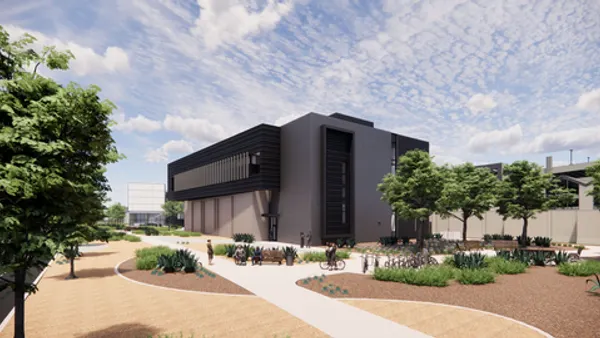Dive Brief:
- State, local and transportation officials in Florida have dedicated SunTrax, a $42 million, 475-acre site in Central Florida for researching, developing and testing emerging transportation technologies, such as autonomous vehicles (AV), according to Mass Transit.
- The 2.25-mile oval track will have five travel lanes and mile-long straightaways. It will test a variety of AV-related aspects in addition to equipment and software, such as toll technology, smartphone-based payments, lane markings and signage.
- Construction on SunTrax began over the summer and is expected to be finished by spring 2019.
Dive Insight:
SunTrax is positioned between Tampa and Orlando in Auburndale, near Florida Polytechnic University. Students there are largely focused on computer science and analytics, and they will take part in testing vehicle sensors and wireless communication.
The oval track at SunTrax will be almost the same length as the Daytona International Speedway. Unlike other AV testing facilities, this one will concentrate on how AVs perform in high-speed environments, specifically on the Florida Turnpike. The mile-long straightaways will allow vehicle testing at high speeds, and the 200-acre infield will accommodate testing of highway-speed toll technology. The site will also examine vehicle-to-vehicle (V2V) and vehicle-to-infrastructure (V2I) technology, high-speed merging, entrance and exit ramps and connected platooning trucks.
A number of AV testing facilities deal mostly with simulating urban environments to determine how the devices will safely interact with objects and humans on real streets. By focusing on high-speed environment simulations, SunTrax will serve a much-needed role. Its research will be particularly relevant to the trucking community, which heavily uses the nearby Florida Turnpike to transport goods from the busy Port of Miami to elsewhere in the United States. This should be welcome news for trucking businesses, considering how much buzz is circulating in that industry over the potential use of AVs.











